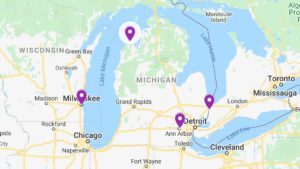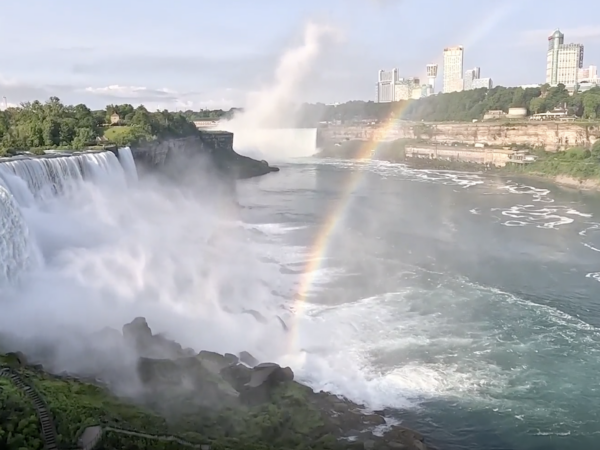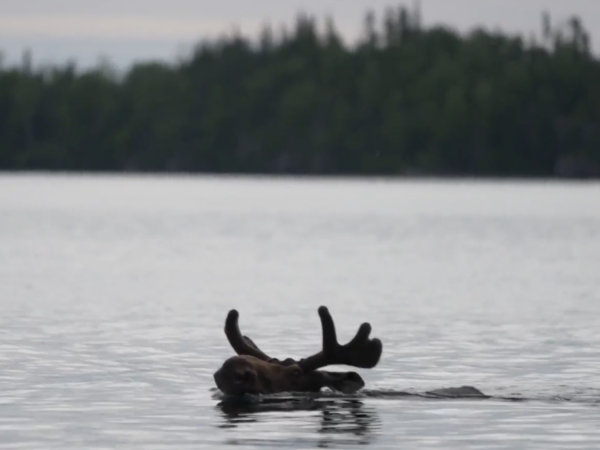A mysterious decades-old home movie chronicles a Great Lakes freighter journey, and our team of experts answer some questions about the film. Can our audience help with more information? And a journalist wondered how much PFAS was in his blood, his home, and his cat so he tested everything and shared the results.
WHERE WE TAKE YOU IN FEBRUARY
Have a question about the Great Lakes or life in the region?
Ask Great Lakes Now, and if we can answer it, we might loop it into our coverage so others can learn too.
Submit Your Question
When to Watch?
Check your local station for when Great Lakes Now is on in your area.
Premieres on DPTV
Tuesday, February 23, at 7:30 PM
STATIONS CARRYING THE SERIES
DPTV
Detroit, Michigan
WEAO
Akron, Ohio
WNEO-TV
Alliance, Ohio
WCML-TV
Alpena, Michigan
WDCP-TV
Bad Axe, Michigan
BCTV
Bay County, Michigan
WBGU-TV
Bowling Green, Ohio
WNED-TV
Buffalo, New York
WCMV-TV
Cadillac, Michigan
WTTW-TV
Chicago, Illinois
WVIZ-TV
Cleveland, Ohio
WKAR-TV
East Lansing, Michigan
WQLN-TV
Erie, Pennsylvania
WCMZ-TV
Flint, Michigan
WGVU-TV
Grand Rapids, Michigan
WPNE-TV
Green Bay, Wisconsin
WGVK-TV
Kalamazoo, Michigan
WHLA-TV
La Crosse, Wisconsin
WHA-TV
Madison, Wisconsin
WNMU-TV
Marquette, Michigan
WHWC-TV
Menomonie-Eau Claire, Wisconsin
WMVS-TV
Milwaukee, Wisconsin
WCMU-TV
Mt. Pleasant, Michigan
WLEF-TV
Park Falls, Wisconsin
WNIT-TV
South Bend, Indiana
WCNY-TV
Syracuse, New York
WGTE-TV
Toledo, Ohio
WDCQ-TV
University Center, Michigan
WNPI-TV
Watertown, New York for Ontario signal
WPBS-TV
Watertown, New York for U.S. signal
WHRM-TV
Wausau, Wisconsin
Freighter Mystery
SEGMENT 1 | Duluth, Minnesota; The Soo Locks; Rogers City, Michigan; Ann Arbor, Michigan; Detroit, Michigan; Toledo, Ohio; Conneaut, Ohio
When we ran across an old home movie shot aboard a Great Lakes freighter, we were curious:
Could we figure out who shot the film?
What decade or even year is it from?
Which freighter were they traveling on?
Could we identify the places they went? Or even the people we see in the film?
We assembled a team of experts and set out to do just that. Armed only with the content of the film and their knowledge of the Great Lakes, they set out to answer these questions and figured out even more.
But it’s still unknown who the people in the film are, or how they came to be traveling the Great Lakes on a freighter.
Do you recognize the faces in this film?
Here are some other Great Lakes Now stories about the shipping industry:
- Stalled Ships: Shipping industry looks to infrastructure investments to boost demand
- Great Lakes Freighters: The latest on navigation, locks and icebreakers
- COVID-19 Comeback: Great Lakes businesses and scientists bounce back
- Fishing and Freighters: Great Lakes industries take COVID-19 economic hit
- Shipping Continues: Great Lakes shipping season opens with extra social distancing
- Enbridge now inspects freighters to avoid another anchor strike on Line 5
- Freighter Photos: Check out some stunning images of the vessels traversing the lakes
WATCH: Drop, Soo and Lock It, Life Aboard a Freighter, Freighter Technology, Ships and Shipwrecks Watch Party
PFAS in the House
SEGMENT 2 | Hamtramck, Michigan; South Bend, Indiana; Seattle, Washington; Pittsburgh, Pennsylvania
People around the Great Lakes region and the country have been exposed to PFAS through drinking water — but that’s not the only place you’ll come in contact with these “forever chemicals.”
After reporting about PFAS issues for a number of media outlets, journalist Tom Perkins started wondering about his own household’s exposure. In a project supported by Type Investigations in collaboration with Great Lakes Now, Perkins got his and his cat’s blood drawn and then tested household items to determine what his potential exposure sources are.
Read Tom Perkins’ story here: PFAS in the House: Are toxic “forever chemicals” a steady drip in this reporter’s home?
Here is some other Great Lakes Now work about PFAS:
- Nonstick pans often don’t note they use PFAS
- PFAS News Roundup: PFAS found in Indigenous household wells, Wisconsin experimental treatment fails, WDNR fish concerns
- PFAS News Roundup: PFAS exposure may affect COVID vaccine, NY bans PFAS in food packaging
- Wisconsin releases action plan to reduce PFAS chemical use
- PFAS chemicals are ubiquitous. A Pitt scientist is working to protect you from thousands of types at once.
- PFAS Around the Great Lakes Region: Actions taken in each state or province and standards set, if any
WATCH: The PFAS Problem and our Emmy-winning documentary Forever Chemicals.
Invaders on the Menu
SEGMENT 3 | St. Clair River, Canadian-U.S. Border; Good Harbor Bay, Michigan; Milwaukee, Wisconsin, Ann Arbor, Michigan
Zebra mussels and round goby have been in the Great Lakes for more than 30 years. As invasives, their impact is most often considered detrimental if not hazardous to native wildlife and systems.
But now some scientists are finding indigenous Great Lakes species can sometimes benefit from the “invaders.”
While studying zebra and quagga mussels in Lake Michigan, a team of researchers made a surprising discovery about round goby: they’re keeping the invasive mussels in check.
“Ironically, an invasive species – the round goby – may be helping to control another invasive species – the quagga mussel – by feeding on them,” said Harvey Bootsma, a professor at the School of Freshwater Sciences at the University of Wisconsin-Milwaukee.
In 2016, with support from the National Park Service and the Great Lakes Restoration Initiative, Bootsma’s team began removing zebra and quagga mussels from an area on the bottom of Lake Michigan.
The researchers wanted to know how long it would take the mussels to reestablish themselves. Four years later, they’re still waiting as it appears, Bootsma said, the round goby is consuming the mollusks.
Meanwhile, David Jude, research scientist emeritus at the University of Michigan, said the invasive round goby has become a favorite food item for a wide variety of native species, from bass and burbot to water snakes.
Initially, native predators like smallmouth bass ignored the goby, Jude said, but in recent years a wide variety of native species have begun to eat gobies.
“Once (gobies) became abundant,” Jude said, “walleye, northern pike, and smallmouth bass, smallmouth bass particularly, really zeroed in on them.”
Smallmouth bass prefer to hunt for food on lake and river bottoms. Crayfish are one of their favorite things to catch and eat. But the bass also seek out small bottom-dwelling fish like mottled sculpin and river darters. Round goby have no swim bladder and live on the bottom so they are a natural target for the bass.
However, when startled, round goby don’t react like native fish, so it took a couple generations of smallmouth bass to work it out.
Today, round goby are a daily special on the Great Lakes native species menu.
Which invasive are YOU most like? Take our Great Lake Now quiz HERE.
Here is some other Great Lakes Now work on invasive species:
WATCH: Carp Advance
WATCH: Mussel Blasting
WATCH: Asian Carp and the Great Lakes
- Genetic Engineering: Researchers take first steps toward controlling sea lamprey
- Complete Eradication: Researchers look at removing sea lamprey from the Great Lakes
- Least Wanted: Potential Great Lakes invasive species are little known but still a big problem
- Zebra Mussels: A guide to the good and the bad of these Great Lakes invaders
- State Struggle: Budget shortfalls stall Asian carp plan, put cleanups at risk
- Study links Asian carp with Mississippi River fish drop
- Asian carp caught in southwest Minnesota
- Divide: Federal agencies, advocates differ on Asian carp strategy
- Study: Asian carp could find plenty of food in the Great Lakes
- Book Club: New book about Asian carp chronicles history, future
In her “previous life” as a writer at Detroit’s Metro Times newspaper, GLN Program Director Sandra Svoboda once ate some Asian carp. Read about that HERE.
Featured Articles
Digital Credits
The Great Lakes Now Series is produced by Rob Green and Sandra Svoboda.
























